AMD Entry-level PC
Two years ago our Entry AMD CPU was single core, last December a bit more money bought a 2.6GHz dual-core system, and today's AMD Entry system uses a Black Edition unlocked 2.7GHz dual-core. It's great to see the increased value in an economy that forces most buyers to look closely at price.
With memory so cheap we have continued our recommendation of 4GB at a 2x2GB kit price of just $27. For this guide we now have the option of 4GB of DDR2-800 with very fast 4-4-4 timings, thanks to the continuing use of rebates as a marketing tool by memory manufacturers. You can buy 2GB and save $18, but that money is well spent in doubling memory. The hard drive remains a 500GB. Finally, the monitor choice has moved up from a widescreen 17" to a higher resolution widescreen 19" - at just $10 more than the previous $100 price. LCD prices have been dropping rapidly and monitor value improves with each new Buyers' Guide in the past year.
| AMD Entry-level PC | ||
| Hardware | Component | Price |
| Processor | Athlon X2 7750 Black Edition Kuma (Dual-core 2.7GHz, 65nm, 95W, 2x512KB L2, AM2+) |
$60 |
| Cooling | CPU Retail HSF | - |
| Video | On-Board | - |
| Motherboard | ASRock A780GMH/128M 780G AM2+/AM3 HDMI | $72 |
| Memory | Patriot Viper Model PVS24G6400LLK 4GB DDR2-800 4-4-4 ($52 less $25 Rebate) |
$27 |
| Hard Drive | WD Caviar GP WD5000AACS 500GB | $55 |
| Optical Drive | Sony Optiarc Model AD-7240S-OB 24X DVDRW SATA | $24 |
| Audio | On-Board | - |
| Case | SIGMA La Vie LBYWBP Leather Mid-Tower w/ 500W PSU ($65 less $20 Rebate) |
$45 |
| Power Supply | 500W Included with Case | - |
| Base System Total | $283 | |
| Display | Acer X193W+BD 19" 5ms Widescreen LCD (1680x1050) | $110 |
| Speakers | Cyber Acoustics CA3090WB 2.1 Gaming Speakers | $16 |
| Input | Microsoft CA9-00001 PS/2 Keyboard and Optical Mouse | $17 |
| Operating System | Microsoft Vista Home Premium SP1 (for System Builders) | $99 |
| Complete System Bottom Line | $525 | |
 |
Prices on all processors are continuing to drop with the aggressive price war between Intel and AMD in entry to upper midrange processors. The $60 Athlon X2 7750BE is a fast 2.7GHz Kuma dual-core at a price of just $60. It is not just faster than in the last guide, but it's also a Black Edition (unlocked) CPU. Most have been easily running at 3.0GHz just by increasing the multiplier. If you want even more power the new Athlon 64 7850 (2.8GHz) is a good choice at $69, or a Phenom 8750 triple-core Black Edition is a terrific value at just $27 more at $87. However, for most users the Athlon 64 X2 7750 provides plenty of power for an entry system. About the only real drawback is that the latest Athlon X2 parts are still using 65nm process technology and come from harvested Phenom chips (i.e. with two non-functional cores), so power draw will be higher than the latest 45nm parts.
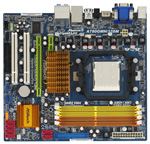 |
The 780G chipset is still going strong and manufacturers are currently updating to second-generation designs based on this IGP workhorse. One of the best second-generation 780G boards in this price category is the ASRock A780GMH/128M. ASRock has done a masterful job in updating their previous GM-LE series of boards. From the new packaging design and accessory kit components to the revised layout, we would be hard pressed to find a better value in this price range. The A780GMH/128M utilizes the AMD/ATI Radeon 3200 integrated graphics engine along with 128MB of Side Port memory to deliver excellent integrated performance. This board features the revised SB710 Southbridge that features six 3Gb/s SATA ports with RAID 0/1/10 support, 7.1 HD audio from the VIA VT1708S codec, 10 USB 2.0 ports, and Gigabit LAN with the revised Realtek RTL8111DL controller. The board has a single PCI-E x16 slot, one PCI-E x1 slot, and two PCI slots along with support for 16GB of memory. ASRock now includes three video output options with D-Sub, DVI-D, and HDMI ports all available on the I/O panel.
All current AM2/AM2+/AM3 processors are supported via an overclocking friendly BIOS. The only (minor) drawbacks with the board are the lack of IEEE 1394a capability and fan control options for the system fan headers. The quality of components utilized in the board is excellent at this price point and we have put the board through a grueling 30-day test period without any problems to date. This board is worthy of an award and we will have a complete review on it shortly, but in the meantime it carries our highest recommendation in this price category.
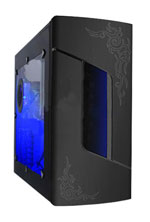 |
There always seems to be some version of the Sigma mid tower with the Sigma 500W PSU on sale or rebate. The case and power supply choice for this guide is the Sigma La Vie Leather Black. This case and power supply are currently on sale for $45 after a $20 rebate. Sigma makes both decent cases and decent power supplies sold individually. While no one will mistake this case/PSU combo for one of the premium Sigma offerings, it is still good quality and good value for a very reasonable price. Even if you pay the regular price of $60 to $65 you will get good value in this combo. We have built several entry systems with the Sigma case and PSU and had good results and stable performance. The only caveat is to check out the case when it arrives as shipping can take its toll on the case front door.
If you prefer a smaller case to mate with a Micro ATX motherboard, the HEC 6K28BSOH48D mini tower with a 485W power supply is an option. It is a solid small case with a power supply form HEC, which is one of the world's best PSU makers. You should generally go for the best case and power supply you can reasonably afford, so you should also look at the cases and power supplies recommended for more expensive systems - particularly if you plan to keep your case/PSU and merely upgrade other components in the future.
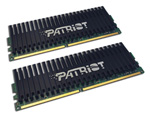 |
With DDR2 prices so very low, we went for 4GB of DDR2-800. This is double last year's entry recommendation for less than half the price. RAM prices as a whole are certainly in the commodity category. There have been small increases in memory prices the last few weeks so you may need to shop a little more for the best price. We recommend the Patriot Viper 4GB DDR2-800 CAS 4 kit, which is just $27 after mail-in rebate. This is faster than our last guide recommendation of CAS5 memory at DDR2-800. You could just as easily choose OCZ, Kingston, Corsair, Crucial, GeIL, Patriot, A-Data or any other quality brand and shop for memory based on a combination of price, timings, and the company's support reputation. Again, if you are truly pinching pennies you can save about $8 by going with 2x1GB DDR2-800 instead at $19 to $20.
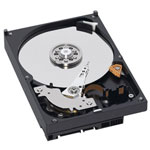 |
Hard drive capacity continues to grow, and we again selected the tried and true Western Digital Caviar 500GB for our entry system. It seems a waste to choose a lower HD capacity when 500GB is now available for under $60. While there are differences between hard drives, outside of running benchmarks most people aren't likely to notice the difference in performance between Western Digital, Seagate, Samsung, Hitachi, and other major brands. All are worthy of consideration if the price per gigabyte (or terabyte) is right.
 |
For the optical drive we went for the newest and fastest Sony 24X DVDRW. With the market moving toward Blu-ray players and 25GB/50GB Blu-ray burners, DVD writers have continued to drop in price. However, a BR player or burner is still a bit rich for an entry system. A Sony DVD writer that supports dual-layer and 24X DVD writes for $24 is a bargain indeed.
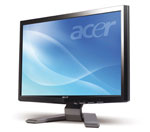 |
The last major component to discuss is the display, and here the tilt must be toward price in an entry system. $100 is a low price for an LCD monitor, but with the prices of LCD monitors dropping $110 now buys a 19" widescreen Acer monitor with a 1680x1050 native resolution. That's a decided step up from the $99 17" LCD chosen in the last Entry System Guide, and the Hanns-G was a 17" 1440x900 LCD. This Acer has the same resolution as most 22" widescreen monitors. You will not give up resolution with this monitor, but things will be a bit smaller.
If your budget allows, you can choose the 21.5" ASUS VH222H with true HD 1920x1080 resolution at $160 after a $10 rebate. 21.5"/22" True HD is today's sweet spot, since the next step up to 23.6"/24" starts around $250. If your budget can stretch to $160, that is money well spent on a 21.5" 16:9 HD wide screen display. We'll have a bit more to say about LCDs on page 4, if you're interested in discussing quality.










65 Comments
View All Comments
strikeback03 - Thursday, May 14, 2009 - link
So it's pretty much a different keyboard with a touchpad for more money? I suppose they could have recommended a DiNovo mini as well, I'd imagine the input devices used are definitely part of the "personal touch" mentioned for the HTPCs.aftlizard - Thursday, May 14, 2009 - link
59.99 would still keep them under there stated budget and 90 dollars less than the Dinovo keyboard while taking up less space, using less batteries and providing better range than RF.GeorgeH - Thursday, May 14, 2009 - link
"The WD Green is a variable speed energy saving design"Unless I'm very much mistaken, that WD drive does not vary its rotation speed. Their original "5400-7200" RPM claims were purely a marketing thing, a shorthand way of saying "5400RPM power consumption with 7200RPM performance". WD no longer bothers to claim their drives vary in speed, instead merely listing it as "IntelliPower" and nothing more.
Saying it's variable speed is good marketing for people who don't see anything beyond RPM, but as AnandTech isn't on WD's payroll it seems a little out of place here. ;)
Spoelie - Friday, May 15, 2009 - link
What intellipower means is that the caviar green line is engineered to meet a power target, not a (rotational) speed target. They guarantee that the speed is at least 5400rpm tho.If the power budget is 7w, and the current design allows this by spinning the disks at 5800rpm, then that is what you get. The next design revision could bump up the speed to 6100rpm while keeping the same power budget (for example, optically shrunk controller chips, or increased density platters -> less platters needed for the same capacity -- both save power which can be spent increasing rotational speed). That's why you have the caviar green EACS, EADS, ...
coda6 - Thursday, May 14, 2009 - link
I agree, I would love to see an article on Anands HTPC set up, or at least a discussion on the possibilities of the current HTPC tech.goinginstyle - Thursday, May 14, 2009 - link
Back to the HTPC stuff, on page 6, your recommendation is ASUS but the pic is a Gigabyte board from the looks of it.Gary Key - Thursday, May 14, 2009 - link
Fixed.... :)goinginstyle - Thursday, May 14, 2009 - link
I think the .05% of people who will run VT with an entry level system sporting Win7 with XP mode are making much to do about nothing in this case. Yes, VT support is important for certain sectors but this in an entry level guide for the masses, most of whom have no idea what VT support even means and could care less if they did.Anyway, it actually appears some thought went into this guide compared to the previous $800 guide. So good job to the editors who actually did some work instead of mailing in their choices this time.
I would rather see a separate HTPC guide explore choices from the ION up to the i7 and include CableCard, Tuners, NAS, and other components built around a true HTPC.
piesquared - Thursday, May 14, 2009 - link
There is no better choice for an HTPC motherboard than MSI's Maui board on an AMD platform. And DDR2 is still cheaper than DDR3. That would be my recommendaton anyway.Also agree with the above poster regarding Intel's lack of virtualization support.
arklab - Thursday, May 14, 2009 - link
Wow!This time you guys really blew it on the Intel CPU choices, and could be giving novices who might rely on your advice a nasty surprise.
None of the selected Intel CPUs support XT-x - which of course is REQUIRED to run the new virtual XP mode in Windows 7.
Worst of all, you don't even warn the reader of this situation.
The AMD CPUs are all OK, of course.
Please change your recommendations to select "full use" CPUs.